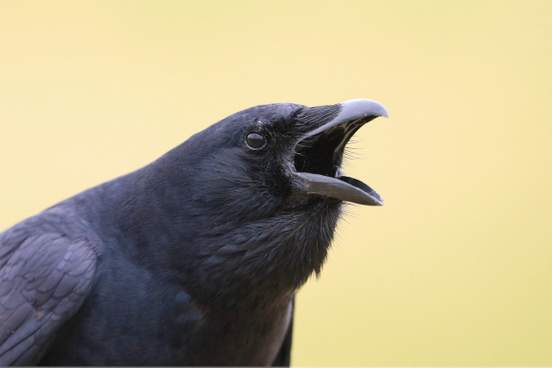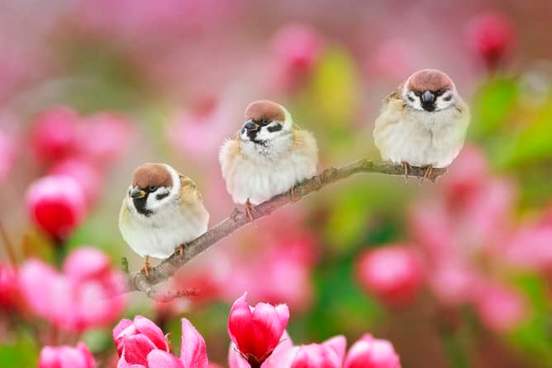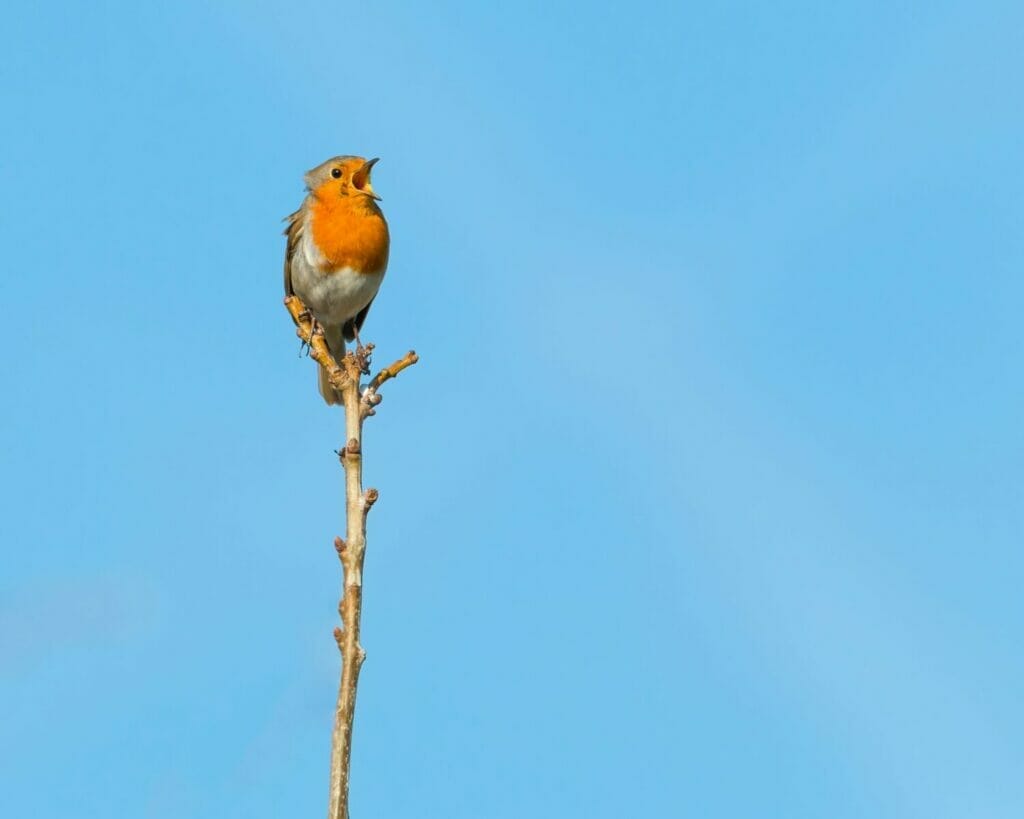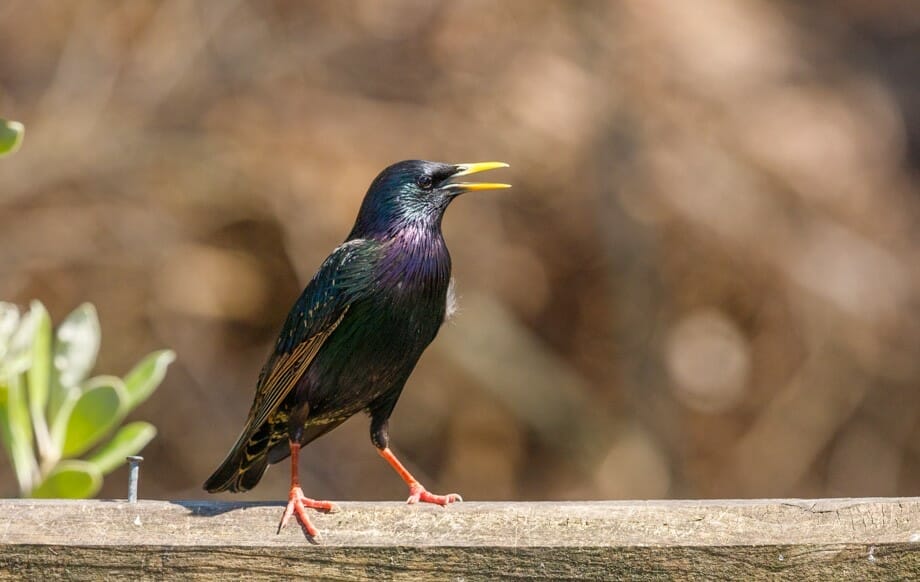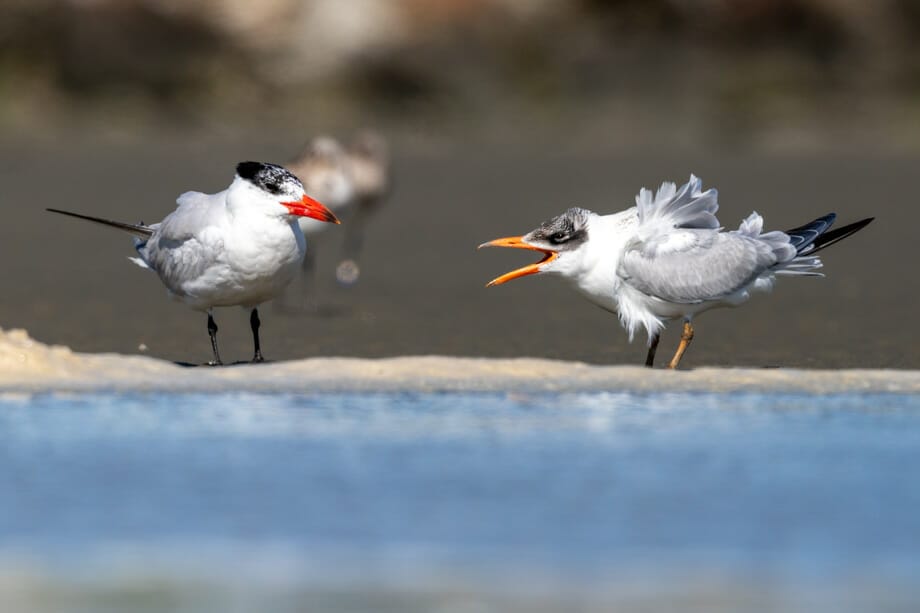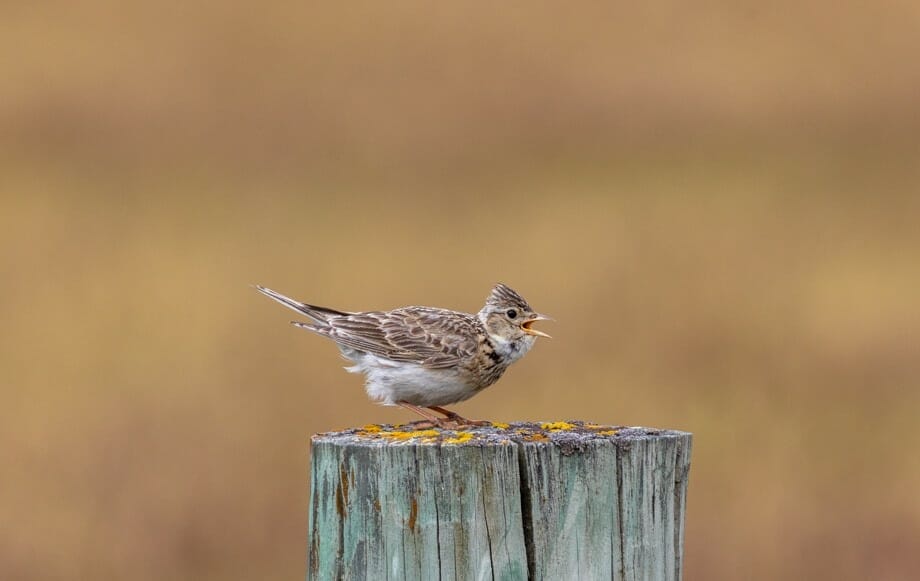We are all aware that animals and birds make some sounds. That sound is a cry.
There are different cries of birds from each other and we will discuss in details the particular words for the cries of birds.
Here is a list of the words for the cries of birds. That is, the names of sounds what the animals make- the birds’ sound name.
Sound Names of Bird Cries
Let us now work on the cries and sounds of birds below:
| Birds | Cries/ Sound names |
| Bats | screech |
| Birds | twitter, chirp, sing, whistle |
| Blackbirds | whistle |
| Canaries | sing |
| Chaffinches | chirp |
| Cicadas | sing |
| Chickens | Cluck, cackle |
| Cocks | crow |
| Cranes | hiss, honk |
| Crows | caw |
| Cuckoos | coo |
| Curlews | pipe |
| Doves | coo |
| Ducks | quack |
| Eagles | scream |
| Egrets | rick-rack |
| Kites | scream |
| Falcons | chant |
| Flamingos | Mutter, grunt |
| Flies | buzz |
| Geese (Gooses) | cackle, gobble, hiss, honk |
| Grouses | drums |
| Hawks | scream |
| Hens | cackle, cluck |
| Hummingbirds | chatter, squeal, hum |
| Jays | chatters |
| Kittens | mew |
| Larks | sing, warble |
| Magpies | chatters |
| Nightingales | pipe, sing, warble |
| Owls | hoot, screech, scream |
| Ostriches | chirp, bark, hiss |
| Parrots | talk, screech, squawk |
| Peacocks | scream |
| Pea-fowls | scream |
| Peewits | pee-wit |
| Pigeons | coo |
| Ravens | croak |
| Redstarts | whistles |
| Robins | chirr, chuckle, laugh |
| Rooks | caw |
| Screech owls | screech |
| Sparrows | chirp, twitter |
| Swallows | |
| Swans | cry |
| Thrushes | sing, whistle |
| Turkeys | Cocks, gobble |
| Vultures | scream |
| Whitethroats | chirr |
| Wrens | warble |
Quick Links
- List of Animal Sounds from A to Z
- Collective Nouns List For Bird Species
English language has a variety of words denoting the sounds of animals and birds. What do you call the sounds created by a cat, for instance? Well, they purr when they are happy, mew when they are hungry and caterwaul when they are on the roof at night. Some of the noises that animals make have interesting names in English.
The following is a list of sound words that denote animal sounds and bird cries. It also contains a list of words that denote the sounds produced by inanimate objects and sounds in nature. Search a word to find more about the sounds of animals and birds.
| Animals / Objects | Sounds |
|---|---|
| Apes | gibber |
| Arms | clang |
| Asses | bray |
| Babies | lisp |
| Bears | growl |
| Bees | buzz, hum, murmur |
| Beetles | drone |
| Bells | chime, jingle, peal, ring, tinkle, toll |
| Birds | carol, chirp, chirrup, sing, twitter, warble |
| Brakes | rasp, screech |
| Bugles | blow |
| Bullets | whizz |
| Bulls | bellow |
| Camels | grunt |
| Cats | caterwaul, mew, purr |
| Cattle | low |
| Chains | clank |
| Cocks | crow |
| Coins | jingle, tinkle |
| Cows | low, moo |
| Crickets | chirp |
| Crows | caw |
| Cuckoos | coo |
| Dogs | bark, bay, growl, howl, snarl, whine, yelp |
| Donkeys | bray |
| Doors | creak |
| Doves | coo |
| Drums | beat |
| Ducks | quack |
| Eagles | scream |
| Elephants | trumpet |
| Flies | buzz |
| Footsteps | sound |
| Foxes | bark, yelp |
| Frogs | croak |
| Geese | cackle, gobble, hiss |
| Goats | bleat |
| Guns | boom, roar, explode |
| Hawks | scream |
| Hens | crackle, chuckle, cluck |
| Hogs | grunt |
| Hoofs | clatter |
| Horses | neigh, snort, whinny |
| Hounds | bay |
| Hyenas | laugh |
| Jackals | howl |
| Keys | jingle |
| Kittens | mew |
| Lambs | bleat |
| Larks | sing, warble |
| Leaves | rustle |
| Lions | roar |
| Magpies | chatter |
| Mice | squeak |
| Monkeys | chatter, gibber |
| Nightingales | sing, warble |
| Owls | hoot, scream, screech |
| Oxen | low, bellow |
| Parrots | chatter, screech, talk |
| Pea-fowls | scream |
| Pigeons | coo |
| Pigs | grunt, squeal |
| Puppies | yelp |
| Rabbits | squeal |
| Railway engines | hoot, roar, whistle |
| Rain | patters |
| Ravens | croak |
| Reeds | whisper |
| Rooks | caw |
| Sea-gulls | scream |
| Serpents | hiss |
| Sheep | bleat |
| Shoes | creak |
| Silk | rustles |
| Snakes | hiss |
| Sparrows | chirp, twitter |
| Squirrels | squeak |
| Steel | clinks |
| Streams | babble |
| Swans | cry |
| Swallows | |
| Teeth | chatter |
| The wind | whistles, sighs |
| Thrushes | whistle |
| Thunder | roars, rolls,rumbles |
| Tigers | growl, roar |
| Trumpets | blare |
| Turkeys | gobble |
| Vultures | scream |
| Water | ripples |
| Wolves | howl, yelp |
Vocabulary for Animal Movement Animal Diminutives List of Onomatopoeic Words
The Teaches of Screeches
Photo: Drew Chaney — Cornell Lab of Ornithology
With the spring migration of hundreds of bird species underway throughout North America, you may hear an unfamiliar call, song, or other bird-related noise in the coming months, whether you live in the city or country. With thanks to the Cornell Lab of Ornithology’s Macaulay Library for the audio and visuals, here’s a list of fifteen common and not-so-common words for avian utterances that might help you distinguish a veery from a vireo.
Like many words for bird calls—including several on this list—hoot is imitative in origin. An “imitative” or “onomatopoeic” word (e.g. buzz) tries to capture the sound it describes. So when you say it out loud, hoot sounds like the natural throat noise produced by some owls. Try it! As we’ll see further down, not all owls hoot, but barred owls and great horned owls do.
Barred Owl:
Great-Horned Owl:
One sense of laugh is “to show emotion (such as mirth, joy, or scorn) with a chuckle or explosive vocal sound.” Since ascribing emotion to such birds as the common loon and laughing gull would be anthropomorphism, another sense in our dictionary—”to produce the sound or appearance of laughter”—is a better fit.
Common Loon:
Laughing Gull:
A screech is a “high shrill piercing cry.” One of the most famous bird screeches is that of the red-tailed hawk, which you might recognize from movies and television shows that dub it over the less strident call of the bald eagle to make that national symbol sound tougher. Another screecher is the barn owl, whose raggedy wail might raise the hair on the back of your neck.
Red-Tailed Hawk:
Barn Owl:
Croaking’s not just for frogs! Yet another imitative word, croak is defined as a “hoarse harsh cry or sound,” which describes the calls of both the common raven and the American bittern.
Common Raven:
American Bittern:
The definition of caw is similar to croak—both are “harsh”—but caw gets the added descriptor “raucous.” This makes perfect sense for the gregarious birds most associated with cawing: crows. Compare the differences in the caws of two crow species, the American crow and the fish crow…
American Crow:
Fish Crow:
Not all bird sounds are vocalizations. The male ruffed grouse, for example, drums (throbs or sounds rhythmically) by rapidly rotating his wings back and forth (up to five times a second), producing a deep, low thumping you can almost feel as much as hear.
Ruffed Grouse:
A chirp is the “characteristic short sharp sound especially of a small bird” and perhaps one of the quintessential bird sound words in English. American goldfinches emit a series of chirps that some say sounds like “potato chip,” while the red-eyed vireo perches high in the treetops where it can chirp for hours on a long summer day.
American Goldfinch:
Red-Eyed Vireo:
A trill can mean “the alternation of two musical tones a diatonic second apart” or “a sound resembling a musical trill.” The flute-like trill of the wood thrush is perhaps the most beautiful song of any North American bird. The descending trill of its relative the veery isn’t too shabby, either.
Wood Thrush:
Veery:
To warble is “to sing in a trilling manner or with many turns and variations.” An entire family (Parulidae) of North American birds is known as the New World Warblers for the quality of (many of) their songs and calls. The song of the Louisiana water thrush—a warbler, not a thrush!—is a mirthful warble heard often beside quick-moving streams in early spring.
Louisiana Waterthrush:
Ruby-throated and black-chinned hummingbirds can produce a buzz, “a persistent vibratory sound,” with their wings. Other birds, like the black-throated green warbler and the northern parula, sing with a distinctly buzzy quality.
Ruby-Throated Hummingbird:
Black-Chinned Hummingbird:
Black-Throated Green Warbler:
Northern Parula:
A whinny is “the neigh of a horse” (of course of course), but also any sound resembling a whinny. Despite its name, the eastern screech-owl doesn’t screech, it whinnies, as does the pileated woodpecker.
Eastern Screech-Owl:
Pileated Woodpecker:
A whistle is “the shrill clear note of a bird or other animal,” and lots of birds whistle—from the soaring broad-winged hawk to the tiny, tree-climbing brown creeper.
Broad-Winged Hawk:
Brown Creeper:
Spoiler alert! The definition of coo, “to make the low soft cry of a dove or pigeon or a similar sound,” would seem to tell the whole story. But other birds coo as well; the greater sage-grouse for example, emits a series of cooing notes as part of a display that also includes swishing (of wings), booming (from its yellow air sacs), and whistling.
Mourning Dove:
Greater Sage-Grouse:
Peent is not entered in our dictionary, due to its rarity, but it’s a word often used by birders to describe the curt, nasal call made by both the American woodcock (low to the ground near the edges of fields and wetlands) and common nighthawk (high in the sky over cities, fields, and woodlands).
American Woodcock:
Common Nighthawk:
Before a tweet was “a post made on the Twitter online message service,” it was “a chirping note.” So, think again of a “short sharp sound” resembling the sound of the word itself. To our ears the lazuli bunting, a vibrantly hued songbird of western North America, absolutely tweets, as does the northern cardinal. If these and the other bird sounds in this gallery delighted you, tweet about it (both senses)!
Lazuli Bunting:
Northern Cardinal:
Bird Words
‘Auspicious’, ‘musket’, and ‘volatile’ all have origins related to birds.
SEE THE LIST >
If you live near the woods or have a backyard that birds often visit, you probably hear a mixture of bird sounds. These sounds might sometimes seem like melodic tunes, tiny tweets, or outright piercing calls. But what are the names of sounds of birds?
If you’ve ever wondered about the names of sounds of birds and what they possibly mean, we’d be glad to help. Let’s give you some insight into the fascinating world of birds!
Birds make a wide array of sounds, and each one has its own purpose. But before we try to interpret them, you should probably know the name of each sound that a bird makes first.
Sing
Birds sing when they make a musical sound. Even though people tend to confuse a song for a call, these two sounds mean different things. In fact, if you listen closely enough, you’ll find that a bird song isn’t the same as a bird call.
Not to worry. We’ll tell you the differences between the two sounds later on.
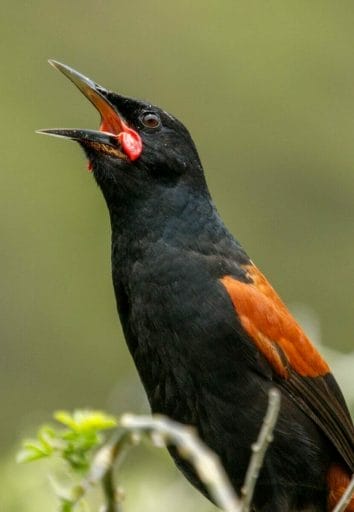
Tweet/Chirp/Twitter
We use the words twitter, chirp, or tweet when a bird makes short, but rather high sounds. If you’re a morning person, you may be familiar with the tweets of early birds.
Shriek/Cry
A bird cries or shrieks when it lets out a loud, sharp sound. Oftentimes, bird cries are associated with calls of alarm and danger.
Hoot
A hoot is a sound produced by an owl. It’s deep and quite easy to identify.
Caw
A caw is the name of the sound made by a crow. Most people are familiar with the caw of a crow. Unlike the hoot of the owl, a caw isn’t deep.
Cock-A-Doodle-Do
This is the sound that a rooster makes, especially early in the morning. However, a lot of pet keepers argue that roosters tend to make this sound throughout the day as well. Just not as frequently as they do at dawn.
Cluck
A cluck is the short, low sound that chickens make.
Now that you know all the names of bird sounds, let’s dive a little deeper into our topic, shall we?
What Is the Difference Between Songs and Calls?
The difference between a song and a call may not always be easy to figure out. This is because birds have a wide range of songs and calls that differ from one species to another. But here’s what we can tell you about this matter.
Songs tend to be more complex than calls, not to mention that they often have a clear pattern. When it comes to songbirds and other types of birds including owls and nightjars, singing serves two purposes.
The first instance when a songbird sings is when it’s time to defend its territory. The other scenario is when trying to attract a mate. As you might have presumed, these two activities are done by males. So, when you hear a bird singing, it’s usually a he.
Bird songs are more popular during the breeding season.
On the other hand, calls are much more simple. They’re usually shorter than songs, and they only consist of one syllable. Unlike songs, calls are made by both sexes, and you can hear them all year round since they aren’t seasonal.
While most people assume that birdsongs are showy and melodic, that’s not the case with some bird species. For instance, Henslow’s Sparrow merely sings one syllable.
The fascinating thing about songbirds is that their basic call notes are born out of instinct. Yet, in some of these species, the young males must hear the song of their own species at a certain age to be able to learn it.
Later, as each one of those birds grows, every single one develops its own version of a song. This results in a huge variety of bird songs, which isn’t the case with calls.
What Are the Types of Bird Calls?
To the untrained ear, bird calls might sound all alike. Those who pay some more attention might notice changes in tempo or pitch from one call to another. But what’s really going on out there?
Contact Calls
When birds communicate with each other, they use contact calls. Typically, contact calls are necessary when looking for food.
A contact call tends to be short, fast, and quiet. It doesn’t carry or create an echo, which is important not to attract any predators. Although, birds sometimes make louder calls in case they’ve become separated from each other.
Flight Calls
Some bird species rely on flight calls when they fly in flocks. A flight call goes back and forth amongst the birds if they detect flocks of other birds passing overhead.
Author Note: When songbirds migrate, which usually happens during spring and fall, they produce flight calls, too. If you’re lucky enough, you might be able to hear their distinctive chirping at night during these seasons of the year.
Alarm Calls
A really cool thing about birds is that they can produce a wide range of calls designed to respond to different sorts of threats. It’s all based on the situation and the type of danger.
For instance, if a predator is flying overhead, a songbird will make a high-pitched, yet short sound. This way, the call will end immediately without drawing the raptor’s attention. At the same time, any other bird in the same area will hear the call and stay alert.
It’s also important to note that this type of alarm call is tailored not to reveal the exact location of its maker.
In other cases, birds might have to make louder alarm calls that will carry for a distance. In this scenario, a raptor will be perched on a branch nearby waiting to attack. So, a smaller bird will make a deep, loud call to rally other birds to scare the predator away.
As you can see, it’s quite incredible how significant and meaningful a bird call can be.
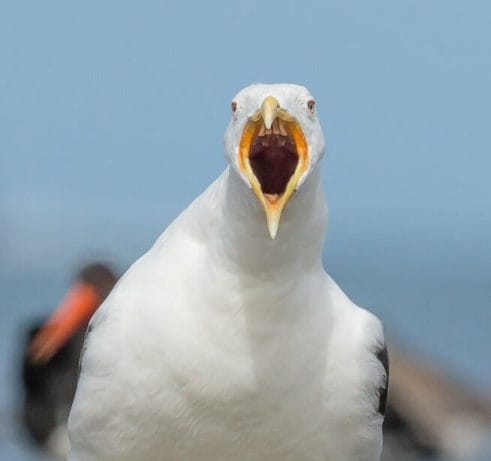
Begging Calls
Young birds make begging calls sometimes when they need their parents to feed them. Usually, these little calls are made repeatedly, and they’re often accompanied by a quick fluttering of wings.
If you ever come across such sounds, you may be tempted to get outside and watch these youngsters while they noisily ask for food. Just be careful to watch from a safe distance not to bother the birds.
Does A Sound of a Bird Vary According to Its Species?
Of course. Each species has its own unique songs, calls, and tweets. In fact, bird experts can tell the species of a bird by just listening to its song.
Yes, the call of a bird can slightly change depending on the situation. Still, each species has a naturally remarkable range of sounds that makes it different from other bird species.
How Do I Identify a Bird By the Sounds It Makes?
If you’re new to the world of birds, it can be tricky trying to identify a bird based on its looks, let alone its songs or calls. So, what if you want to know which birds visit your yard every day?
The good news is, you can totally do it without being an expert in birding. Fortunately, many helpful apps could give you a hand. All you’ll have to do is record the sound that the bird makes, then wait for the app to analyze it.
Eventually, you’ll end up with all the information you need about the species of this bird.
Our favorite bird-identifying apps are Birdgenie and BirdNET. So, you may want to try those the next time you go for a hike in the woods to add some more fun to your experience.
What Are Some Other Noises That Birds Make?
If you watch birds closely enough, you’ll realize that they make more sounds than the ones we’ve mentioned. However, these other noises are not vocalized.
Author Note: For instance, woodpeckers drum on the barks of trees to catch food in the form of bugs. Also, the mere movement of a bird can cause the leaves to shuffle. Plus, the flapping of a bird’s wings is another subtle sound that a bird creates.
While all these noises might be too minimal to help you identify a bird species, some could still be of huge help. For example, by measuring the pace of a woodpecker’s knocks, you might be able to gather more information about its exact species. Pretty cool, right?

Final Words
While the names of sounds of birds are pretty easy to learn, knowing the meaning behind a bird’s call might be tricky.
This is because these feathery creatures have undergone centuries of evolution. So, they’ve managed to come up with numerous calls to match each one of their needs.
However, you could still manage to identify the species of a bird based on the songs it sings. With the right bird ID app, it’ll only take you a few minutes. We hope you found this article on the names of sounds of birds useful.
Fly high friends!
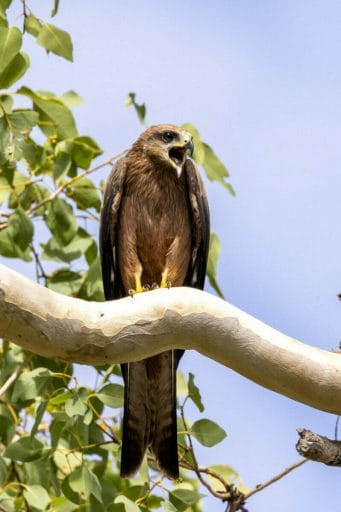
FAQ
Is there a free app to identify bird sounds?
Merlin Bird ID is a great app to identify bird calls.
What is the most common chirping bird in the United States?
Although it is not native to America, the humble House Sparrow chirps all day long. If the are present in your neighborhood, then likely you will be able to hear them.
What is the most gentle bird call?
It is widely recognized that doves have the most gentle calls. The cooing noise they make is so beautiful and calming.
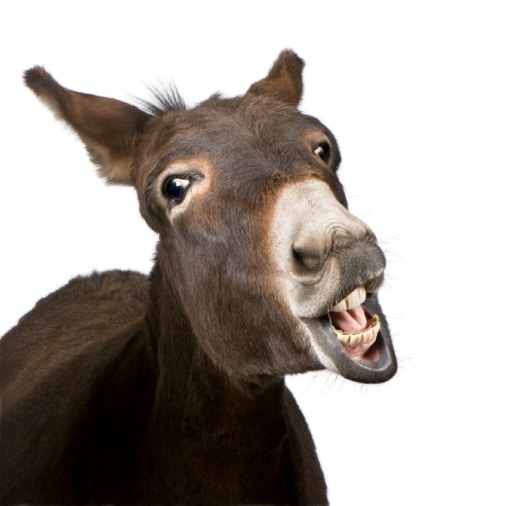
By
Last updated:
June 23, 2022
How to Talk to Animals in English: 17 Animal Sounds You’ll Love to Say
Meow! Woof! Chirp!
Cats, dogs and birds all speak the same language, but the words used for their sounds vary from language to language.
Some animal sounds and verbs are also used in everyday conversation to mean different things.
So besides learning some fun new words, knowing animal sounds in English will also show you new ways to express yourself in conversation.
Contents
- Don’t Animals Sound the Same in All Languages?
- Why Learning English Animal Sounds Is Important
- Hee-Haw! 17 Fun Animal Sounds in English
-
- 1. Cats — meow
- 2. Dogs — woof
- 3. Horses — neigh
- 4. Goats and sheep — baa
- 5. Pigs — oink
- 6. Cows — moo
- 7. Donkeys — hee-haw
- 8. Chickens — cluck
- 9. Roosters — cock-a-doodle-do
- 10. Birds — chirp
- 11. Owls — Hoot
- 12. Ducks and geese — quack and honk
- 13. Turkeys — gobble
- 14. Mosquitoes — buzz
- 15. Crickets — chirp
- 16. Frogs — ribbit
- 17. Lions — roar
Download:
This blog post is available as a convenient and portable PDF that you
can take anywhere.
Click here to get a copy. (Download)
Don’t Animals Sound the Same in All Languages?
Animal sounds are a form of onomatopoeia, which are words that imitate sounds. Words like “pop” “buzz” and “boom” are forms of onomatopoeia, and so are “meow,” “woof” and “moo.”
Cats and explosions might sound the same all over the world, but the way we hear sounds is different depending on where you’re from. For example, if you speak a language that doesn’t have the letter “l,” like Japanese, you might say that a chicken says “koke,” not “cluck.”
Most animal sounds around the world are similar, with some variations depending on the language and the way we hear things.
If you’re interested in how animals sound in different languages, check out this page. (The rooster’s crow and the frog’s croak have some interesting variations!)
Why Learning English Animal Sounds Is Important
Knowing animal sounds in English might seem unimportant, but these sounds are a part of culture. Animal sounds are one of the first things babies learn when they’re learning to speak. You may not need to use the word “moo” in everyday conversation too often, but knowing it will take you one step closer to speaking—and thinking—like a native.
Animal sounds, and onomotopoeia in general, can also help you understand how to pronounce words better, since it helps you hear things differently. The more you know about the English language, no matter how trivial (unimportant) the information seems, the better you will become at it!
1. Cats — meow
As any cat owner knows, cats meow when they want something. When they’re content (happy), like if they’re enjoying some petting, they purr. Cat purring sounds like a little engine!
Unhappy cats might yowl, or cry out loudly. Or they might hiss, which is also the sound a snake makes.
2. Dogs — woof
Dogs make many noises, depending on what they’re feeling and even how big they are. Angry dogs growl, scared dogs whimper, and some dogs (and wolves) howl.
Many dogs woof or ruff, but small dogs yip and yap (someone yappy is someone who talks a lot), while large dogs have a deep bow-wow. All these sounds are called barking. A dog that says “woof” is not “woofing,” it’s barking.
3. Horses — neigh
If you’ve ever heard a horse’s sound, you know it’s hard to describe. In English the sound is written as a neigh, and is called a whinny.
The word “whinny” might be another attempt to write the sound a horse makes, or might be related to the word “whine,” which is a complaining sound (and in fact, can be used to talk about humans who are complaining a lot in a childish way).
Horses also make a snorting sound and the less often used nicker, which is a low whinny.
4. Goats and sheep — baa
A classic nursery song mentions the sounds of goats and sheep: “Baa baa black sheep have you any wool?”
These farm animals make the sound baa, which is unusual because we don’t normally see two a’s next to each other in English. The double a’s are used to show that the sound is elongated (lengthened). This cry is called a bleat.
5. Pigs — oink
Pigs seem to speak differently in every language, and in English they say oink. Pigs also squeal, which is a high-pitched whine. Humans squeal too, usually to show happiness (i.e. “She squealed in delight when she saw the present”).
“To squeal on someone” also means to tell on them, especially when it concerns a crime. For example, “The robber would have gotten away with the money, but his partner squealed to the police.”
Another pig noise is the grunt. You probably grunt sometimes too, since it’s the sound you make when you do something physically difficult. A grunt is also the name for the lowest level workers and soldiers. This led to the term “grunt work,” used to describe boring jobs that no one wants to do. We seem to take a lot of inspiration from pigs!
6. Cows — moo
The sound a cow makes is moo. This sound is officially called lowing, which comes from a word that means to shout, but you’ll probably never hear it called that in real life. Saying that “the cow is mooing” is just fine!
7. Donkeys — hee-haw
Donkeys have a two-toned call that sounds pretty funny. In English, this sound is called braying, and is written as hee-haw.
The British version is a bit different from the American though; it’s written as eeyore. Sound familiar? That’s the name of the sad donkey in the Winnie the Pooh stories.
8. Chickens — cluck
Female chickens are called hens and they make a clucking sound. Baby chickens say cheep, and are called chicks, which is also an extremely informal and somewhat insulting way to refer to women.
Different languages seem to agree on these sounds pretty closely, but roosters (male chickens) are a different matter!
9. Roosters — cock-a-doodle-do
When a rooster calls in the morning, that’s called crowing (similar to the bird “crow,” but in this case it’s a verb). In English, the sound of a rooster is written as cock-a-doodle-do. How is that different from the sound a rooster makes in your language?
10. Birds — chirp
Birds of all sizes are known for their sounds, which are usually called singing. Birds chirp, trill and warble. They also tweet and twitter, which you might recognize as the name of a very popular social media website with a bird logo. Now you know why!
11. Owls — Hoot
Owls might be birds, but they make different sounds. In fact, they’re known for not using too many sounds at all as they fly; they’re silent predators (animals that hunt other animals for food).
The owl’s sound is called a hoot. Owls, and other birds of prey like eagles and hawks, can also screech—a loud, high-pitched yell.
12. Ducks and geese — quack and honk
Do you think ducks and geese sound the same? In English, they make two very different sounds. Ducks quack and geese honk. Both words are also used in regular English: cars and trucks also honk when they blast their horns, and a quack is a fake doctor.
13. Turkeys — gobble
The sound a turkey makes is called a gobble. That’s also a word that means to eat quickly. So every Thanksgiving—an American holiday when people traditionally eat turkeys—we gobble up turkeys.
14. Mosquitoes — buzz
How many times have you been awakened in the middle of the night as a mosquito flew by your ear? Many insects like mosquitoes, flies and bees, make a buzzing sound.
In the middle of the night, the sound is more like a whine, which you’ve already read means to complain. We should be the ones complaining!
15. Crickets — chirp
Crickets, like birds, say chirp. Many crickets chirping together make a beautiful symphony. One cricket chirping indoors can drive you crazy.
16. Frogs — ribbit
In English, frogs croak or say ribbit, and you can thank Hollywood for that! Ribbit is the accepted sound for a frog in English, but only one frog species actually says ribbit, and it was introduced into our language by Hollywood when sounds came to the movies.
17. Lions — roar
If you’re out in the African wilderness and you hear a low growl or a loud roar, get out of there fast! That’s the sound of a lion, the “king of the jungle.”
Now you’ll always know which words to use when you’re talking about animals. These aren’t brought up as much in English classes, but they’re fun to learn.
In general, onomatopoeia is used in stories and sometimes in casual language. To expand your vocabulary, you can pick up more onomatopoeia and even slang through English media, such as the videos on the language learning program FluentU. They feature plenty of expressive words, and you’ll learn them in context through interactive subtitles and custom quizzes.
As your vocabulary grows, you’ll be able to spice up your speech and improve your writing. That’s one step closer to using English like a native!
Download:
This blog post is available as a convenient and portable PDF that you
can take anywhere.
Click here to get a copy. (Download)

